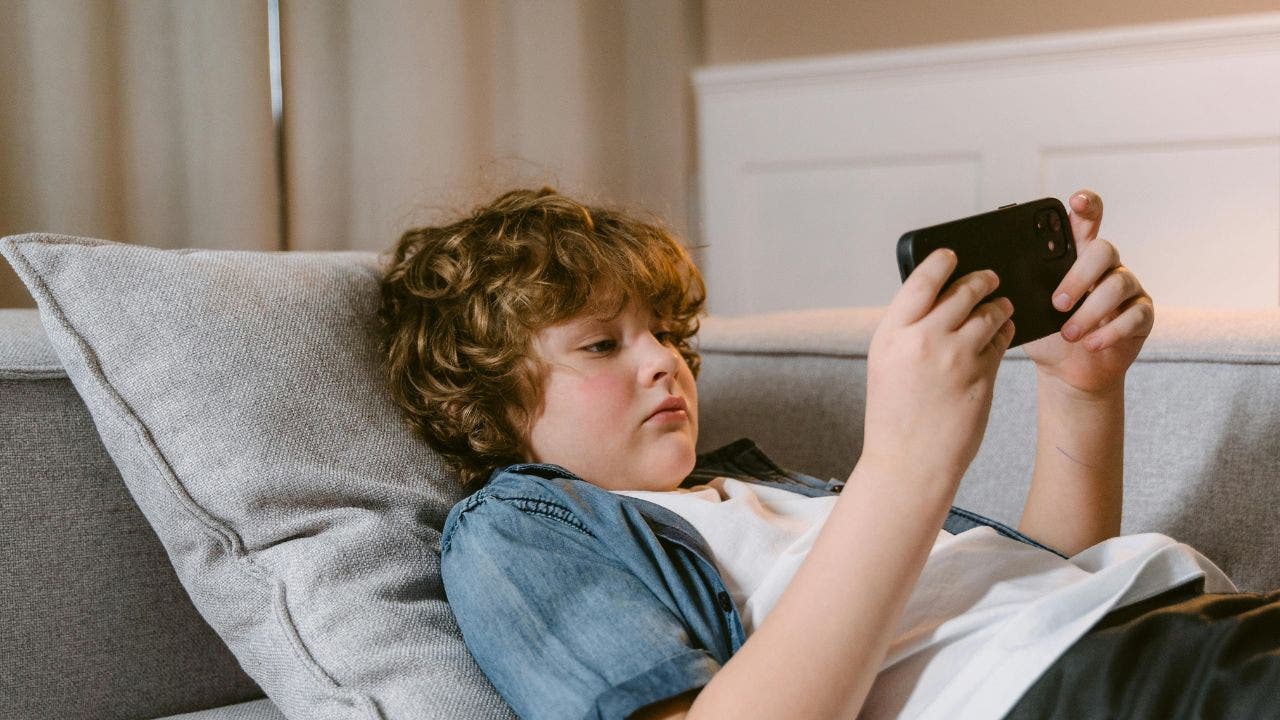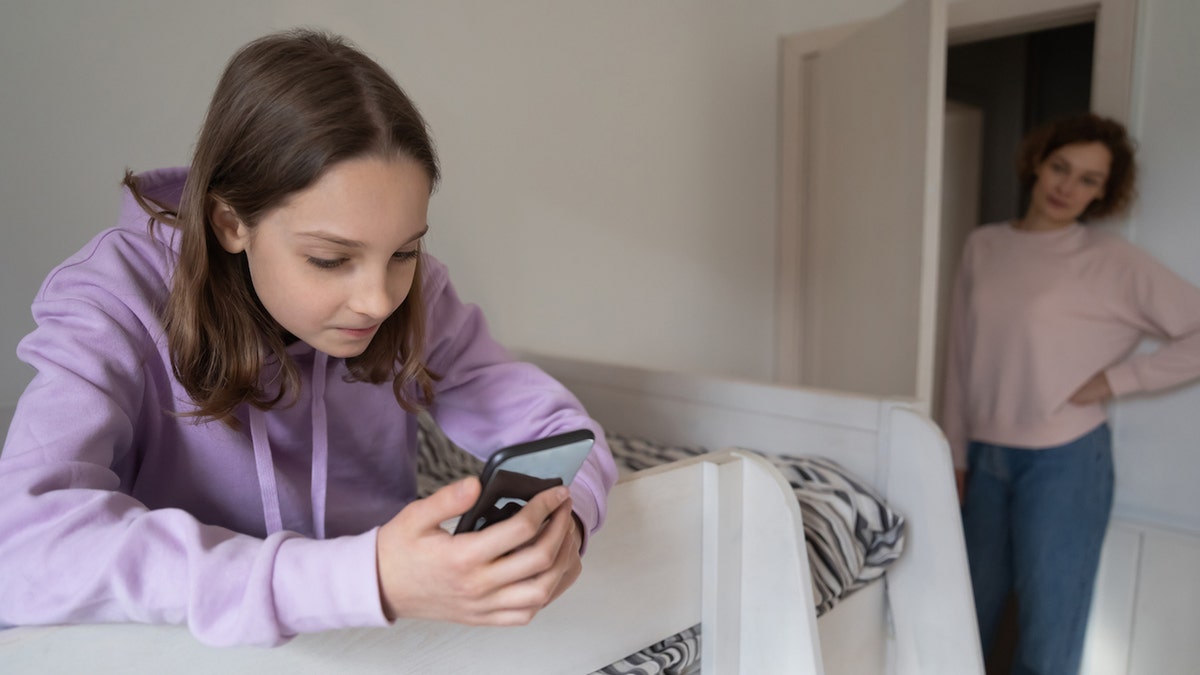For Mike Hill and Guillermo del Toro, it all started with Frankenstein.
Technology
Kia’s next EV is the affordable, long-range EV4 sedan

The EV4 sedan was first announced as a concept in 2023, but it’s now a real car. It comes in two versions. One has a funky rear that stretches out to look like a traditional 4-door car. The other, a “five-door” hot-hatch-looking version will primarily be for the European market, according to Kia. These aren’t going to be Kia’s most-performant EVs though, as they will be single-motor front-wheel drive vehicles with just 150kW of power and a 0-62 mph acceleration time as quick as 7.4 seconds.
The EV4 will also run on a lesser 400-volt version of the company’s E-GMP platform instead of the faster-charging 800-volt versions used in the EV6, Hyundai Ioniq 5, and others. Kia says the system can still charge 10 to 80 percent in as little as 31 minutes.
The vehicles could shine in battery range. Kia says they’ll get up to 630km (about 391 miles) on a single charge with the larger 81.4 kWh battery option, and 430km (about 267 miles) on the smaller 58.3 kWh battery. However, those estimates are based on Europe’s more generous WLTP standards.
The EV4 still offers some of Kia’s cooler EV tech. It has a 30-inch widescreen display (really three side-by-side instrument cluster and infotainment screens) that run Kia’s latest “connected car Navigation Cockpit (ccNC) software. You get entertainment options like YouTube, Netflix, games, and more that will be available from an app store.. You can also get an AI voice assistant, Apple Watch digital key access, V2L for powering household devices, and a “Smart Cruise Control 2” advanced driver-assistance system with lane keeping.
Kia’s concept EV2, which had purportedly been spotted in camouflage last year, is supposed to be even cheaper than the EV4. The company says the mini-SUV will be its “smallest EV yet” and will have options to reconfigure seating to maximize front row space for lounging or for rear cargo. It will also have perks like removable portable speakers for tailgating.
The EV4 sedan will initially be built in Korea and will first launch there in the middle of March. The EV4 hatchback will be produced in Slovakia and will launch in Europe in the second half of 2024. The North American version of the sedan will be produced “later in the year.” The EV2, meanwhile, is coming in 2026 for Europe and other regions, although its US availability is yet to be confirmed.
Kia President Ho Sung Song announced at the event that EV4 pricing will start at 37,000 euros (about $38,500), Electrek reports. The initial run will include 160,000 units, of which 80,000 are destined to ship to North America.
With the EV4, US car buyers might soon have another affordable mass-market electric car option against the Tesla Model 3. The EV4 could fill some vacancies, too, as automakers like Volkswagen, which is no longer bringing the ID.7 stateside, re-tune their EV strategies amidst the Trump administration’s interests to eliminate electric vehicle incentives.

Technology
How Frankenstein’s creature designer found a new look for an iconic monster

Years ago, Hill — a sculptor and special effects artist — was exhibiting his works at a convention in Burbank. Del Toro saw some of Hill’s monstrous creations on display and was so impressed that he decided to get in touch, tracking down Hill’s contact info from an obscure model kit forum. “I don’t know how he found me from some 20-year-old website,” says Hill, who describes del Toro’s investigation as “very Columbo-esque” work. “But he wrote to me, told me who he was, and asked to commission something.”
That first commission turned out to be a sculpture of Boris Karloff having his makeup applied for the iconic 1931 version of Frankenstein, and it would go on to be displayed in the director’s famous Bleak House. “Immediately it was Frankenstein,” Hill says, “our very first job together.”
From there, a fruitful relationship blossomed; Hill went on to design creatures for films like Nightmare Alley and The Shape of Water, and the Netflix anthology Cabinet of Curiosities. But when word came out that del Toro was working on his own long-awaited version of Frankenstein, Hill’s phone remained curiously silent. “I was fretting because I knew he was going to do Frankenstein and hadn’t been in touch with me,” Hill tells me. “It was driving me bonkers.” But del Toro hadn’t forgotten about his partner — in fact, it turns out Hill was vital for the project.
“Guillermo invited me for breakfast and he said: ‘Listen, we’re doing Frankenstein. If you’re not doing it, then I’m not doing it, so it depends on you right now. Eat your eggs and tell me at the end of it if we’re doing the movie.’”
Naturally, Hill said yes.
1/5
That version of Frankenstein had a brief run in theaters and will be streaming on Netflix on November 7th. And it was particularly challenging for Hill given how ubiquitous Frankenstein’s creature is. Karloff’s interpretation from Frankenstein in 1931, designed by legendary Universal makeup artist Jack Pierce, is an indelible part of pop culture, and since then there have been hundreds of variations across stage and screen. “It was very difficult trying to come up with something that no one had ever seen,” Hill says.
The design process was a collaborative one between the director and artist. Del Toro didn’t provide explicit instructions, but instead explained what he didn’t want. The creature shouldn’t be hideous, for example, which meant no heavy, ugly stitching. From there Hill created a few options, and spent some time researching 18th-century surgery techniques, before hitting on the final version. “I just wanted to make him of the period, like he was built in the 1800s,” Hill says. “I wanted it to look like a human being had meticulously done this to him.”
This iteration of the creature is tall and lean, with scars covering his entire body to create an almost geometric pattern. This fits with the story of the film, which really digs into the pseudoscientific process that Victor Frankenstein goes through to build this creature and eventually bring him to life. And that contrast between beauty and horror is a key part of the character, according to Hill. “There’s a certain beauty that Victor was striving for,” he says. “He tried to make a beautiful glass window, it just ended up stained and broken.”
1/5
In those early stages, Hill had little to go on. There was no script, nor was anyone cast as the creature. Later, he spent eight months designing prosthetics for an actor who eventually left the project due to a conflict. At that point, del Toro sent Hill a list of potential actors he was considering to take over, and one in particular stood out: Jacob Elordi, who eventually took on the role.
Hill cites “his demeanor, his gangliness, his limbs, his doe-like eyes,” as the reasons Elordi was so perfect as the creature. It helps that the Euphoria star is a towering 6-foot-5 and, according to Hill, has the kind of face that makeup artists dream about. “Jacob’s bone structure made things a lot easier,” he says. “He has this very strong jaw, this very strong chin. Speaking as a prosthetics artist, chins are a pain in the ass.” The final version of the design involved 42 different prosthetics pieces, and when Elordi had to wear the full-body kit, it required around 10 hours in the makeup chair.
One of the most important parts of the final design is how it’s able to evolve over the course of the movie. Initially, the creature is bald and nearly naked, signaling his childlike innocence. But after being abandoned by his creator, he takes on a harder look, eventually growing out his hair and wearing a long cloak. Elordi’s demeanor changes as well; he mostly cowers early on, before being turned into something much more menacing and terrifying. From a design standpoint, all that really changes is the hair and wardrobe; and yet, the transformation is dramatic.
In the end, Frankenstein proved to be an ideal collaboration for Hill and del Toro. The artist tells me that he’s been making monsters since he was a kid, scooping up mud from a nearby riverbank to sculpt them with, and from those early days Mary Shelley’s story was a guiding influence. He went on to create multiple versions of the creature as a professional artist, and is currently working on a short film based on a decade-old sculpture. Just like del Toro, the idea of tackling Frankenstein in his own way was a longtime goal. So while it may have involved a bit of stress waiting for del Toro’s call, it was ultimately worth it.
“I always dreamed that he would make it,” Hill says.
Technology
5 phone safety tips every parent should know

NEWYou can now listen to Fox News articles!
Kids today are growing up in a world where screens, apps and social platforms are part of everyday life. From homework to gaming to group chats, their digital lives can move faster than parents can keep up. But behind every app and device are settings and systems that can impact their privacy, safety, and focus.
Whether you’re trying to set healthy limits, track screen time or just understand what your child’s phone can do, knowing a few key tech terms can make parenting in the digital age a lot less stressful. Here’s a quick guide to help you stay informed, confident and in control.
Sign up for my FREE CyberGuy Report
Get my best tech tips, urgent security alerts, and exclusive deals delivered straight to your inbox. Plus, you’ll get instant access to my Ultimate Scam Survival Guide – free when you join my CYBERGUY.COM newsletter
Setting healthy screen time limits helps kids learn balance and keeps tech use from taking over family time. (Kurt “CyberGuy” Knutsson)
1) Screen time limits
The boundary that helps restore balance
Screen time limits let you manage how long your child spends on apps, games or devices each day. It’s not about punishment, it’s about setting healthy boundaries that help kids disconnect and recharge.
Why it matters: Too much screen time has been linked to reduced focus, sleep disruption and overstimulation. Setting limits helps your child create a better balance between online fun and real-world rest.
How to set screen time limits
On iPhone:
- Go to Settings
- Tap Screen Time
- Click App Limits
- Select Add Limit, choose categories or specific apps and set daily time limit
On Android:
Settings may vary depending on your Android phone’s manufacturer
- Go to Settings
- Tap Digital Wellbeing & Parental Controls. If you don’t see it right away, try searching “Digital Wellbeing” in the Settings search bar
- Open the Dashboard or App Timers section. On some phones (like Samsung), it may appear as “App Timers”. On others (like Google Pixel), tap Dashboard to view your app usage list
- Tap the hourglass icon next to the app you want to limit
- Set a daily time limit, then tap OK or Done
- The timer resets every night at midnight
Pro tip: Make it a family routine. Review screen time reports together so kids feel involved in the process rather than restricted.
TEENS HACK SCHOOL CELL PHONE BANS WITH CREATIVE WORKAROUNDS
2) Parental controls
Your built-in safety net
Parental controls are tools that let you manage what your child can see and do on their devices – from blocking explicit content to approving downloads and monitoring usage. Every major device, app and streaming service has its own version.
Why it matters: Parental controls can help prevent exposure to inappropriate content, manage purchases and set up age-appropriate experiences.

Built-in parental controls make it easier to guide what kids can see and do on their devices. (Kurt “CyberGuy” Knutsson)
How to turn parental controls on
On iPhone:
- Go to Settings
- Click Screen Time
- Tap Content & Privacy Restrictions
- Turn it on so the toggle turns green.
- Within Content & Privacy Restrictions you can go to sections like Allowed Apps, iTunes & App Store Purchases, etc, to set filters and restrict what apps the device can do.
On Android:
Settings may vary depending on your Android phone‘s manufacturer
- Go to Settings
- Tap Digital Wellbeing & Parental Controls
- Select Parental Controls, then follow the steps to set up a supervised account through Google Family Link, which lets you manage screen time on a child’s device remotely
Pro tip: Most streaming apps, like YouTube, Netflix and Disney+, also have parental settings, so make sure you adjust those separately.
3) Geolocation
The invisible map in your child’s pocket
5 SOCIAL MEDIA SAFETY TIPS TO PROTECT YOUR PRIVACY ONLINE
Geolocation allows apps and devices to track physical location in real time. It powers navigation and “Find My” features but can also share more than you intend if left unchecked.
Why it matters: While location sharing helps families stay connected, it can pose privacy and safety concerns if apps broadcast your child’s whereabouts.
How to manage location access
On iPhone:
- Go to Settings
- Click Privacy & Security
- Then, click Location Services
- Tap each app and change “Always” to “While Using the App” or “Never”
On Android:
Settings may vary depending on your Android phone’s manufacturer
- Go to Settings
- Tap Location (or “Location & security” or “Privacy → Location” depending on device)
- Tap App location permissions (or “Permission manager → Location”)
- Select an app from the list
- Change the app permission from, “Allow all the time” to “Allow only while using the app” or “Don’t Allow”
Pro tip: For younger kids, use “Share My Location” within Family Sharing (iPhone) or Google Family Link (Android) instead of third-party tracking apps to ensure safer monitoring.
4) Private browsing
The mode that hides – but doesn’t erase
Private browsing, also called Incognito Mode, lets users browse the internet without saving history, cookies or logins. While it may sound harmless, it can make it harder for parents to see what kids are accessing online.
Why it matters: Private browsing prevents history tracking on the device, but your internet provider, school or router may still record activity. It’s a reminder that no browsing mode is completely private.
TEENS FACE NEW PG-13 LIMITS ON INSTAGRAM
How to disable private browsing
On iPhone (Safari):
- Open Settings
- Tap Screen Time
- Tap Content & Privacy Restrictions
- If prompted, enter or set a Screen Time passcode
- Turn on Content & Privacy Restrictions (toggle to green)
- Tap App Store, Media & Purchases (or similarly named) and optionally set limits
- Click Web Content
- Choose one of the options such as, Limit Adult Websites (this will disable Private Browsing in Safari) or Only Approved Websites
On Android (Chrome):
Settings may vary depending on your Android phone’s manufacturer
- Open the Family Link app on your Android phone (or download it if it isn’t installed)
- Select your child’s profile
- Tap Controls
- Click Google Chrome & Web
- Choose Try to block explicit sites (or select “Only allow approved sites” for stricter filtering)
- This setting automatically disables Incognito Mode in Chrome for your child’s supervised account
- (Optional) You can also review SafeSearch and YouTube restrictions under the same section for extra protection

Conversations about online safety matter more than rules alone because openness builds digital trust. (iStock)
SCHOOLS’ SAFETY TOOLS ARE SPYING ON KIDS — EVEN AT HOME
Pro tip: Talk to your child about why transparency matters. Turning off private browsing is most effective when paired with open, ongoing conversations about online safety.
5) Digital footprint
The trail your child leaves behind
Every post, comment or photo shared online becomes part of your child’s digital footprint, a permanent record of their online presence. Even deleted posts can live on through screenshots, data archives or algorithms.
Why it matters: Colleges, employers and even peers can access public digital traces. Teaching kids to think before posting helps them build a positive and professional online reputation.
How to check what’s out there
- Search your child’s name on Google and image results
- Review old accounts or unused apps that may still contain personal info
- Help them make their social media profiles private and share selectively
Pro tip: You can also set up Google Alerts for your child’s name to get notified whenever new content appears online, a simple, free way to stay aware of their digital footprint as it evolves.
Also, you may want to consider using a data removal service to help clean up your child’s personal information that may appear on people-search sites or data-broker platforms. These tools scan the web for outdated profiles, cached pages and databases containing sensitive details like addresses, phone numbers and photos. They can automatically submit takedown requests and continue monitoring for new exposures over time.
While no service can guarantee the complete removal of your data from the internet, a data removal service is really a smart choice. They aren’t cheap, and neither is your privacy. These services do all the work for you by actively monitoring and systematically erasing your personal information from hundreds of websites. It’s what gives me peace of mind and has proven to be the most effective way to erase your personal data from the internet. By limiting the information available, you reduce the risk of scammers cross-referencing data from breaches with information they might find on the dark web, making it harder for them to target you.
Check out my top picks for data removal services and get a free scan to find out if your personal information is already out on the web by visiting Cyberguy.com
Get a free scan to find out if your personal information is already out on the web: Cyberguy.com
Take my quiz: How safe is your online security?
Think your devices and data are truly protected? Take this quick quiz to see where your digital habits stand. From passwords to Wi-Fi settings, you’ll get a personalized breakdown of what you’re doing right and what needs improvement. Take my Quiz here: Cyberguy.com
Kurt’s key takeaways
Parenting in the digital age doesn’t mean knowing every app or trend. It means understanding the fundamentals that shape your child’s online experience. From screen time limits to digital footprints, these five terms give you the language to set boundaries, foster trust and keep your family safer online.
CLICK HERE TO DOWNLOAD THE FOX NEWS APP
Want more help building healthy digital habits at home? Let us know by writing to us at Cyberguy.com
Sign up for my FREE CyberGuy Report
Get my best tech tips, urgent security alerts, and exclusive deals delivered straight to your inbox. Plus, you’ll get instant access to my Ultimate Scam Survival Guide – free when you join my CYBERGUY.COM newsletter
Copyright 2025 CyberGuy.com. All rights reserved.
Technology
You need to watch the found footage classic, Lake Mungo

Found footage movies are tough to pull off. For every classic like The Blair Witch Project or Rec, there are 100 movies like Slender and Megan Is Missing that are, at best, forgettable, and at worst, an affront to the very concept of cinema. My personal favorite, though, is Lake Mungo, a slow burn mokumentary with found footage elements that manages to be both creepy and emotionally wrenching. Oh, and it’s gloriously concise at under an hour and a half.
Lake Mungo is, first and foremost, one of the most convincingly realized mokumentaries ever made. If you told someone it was a legit documentary about a supposed haunting, there’s a chance they’d believe you. The style is spot-on, the performances pitch-perfect, and it never overreaches. Other horror films in this style eventually go too far, resorting to bombast, like the BBC’s Ghostwatch (which is also excellent). But Lake Mungo remains understated, even when it shows purported footage of a ghost.
Director and writer Joel Anderson hasn’t helmed a feature film since. Though he has found work in the film industry recently, including on 2023’s Late Night with the Devil, after an over 10-year absence.
The story follows the Palmer family as they struggle with the loss of 16-year-old Alice Palmer, who drowns while swimming in a lake. Mother June wanders her neighborhood late at night, unable to sleep, father Russell buries himself in work, and brother Matthew throws himself into his art. As you’d probably expect from this type of horror film, the family starts experiencing strange things — sounds, mysterious bruises, and even a full-on confrontation with an apparition.
From here, the film takes several twists and turns that elevate it above your typical “pots and pans” horror, which I will avoid spoiling. But its grainy, haunting segments and emotional interviews with the family get under your skin. There’s no jump scares, no gore, just expert tension building that eventually reaches a terrifying conclusion. The image at the climax of the film is one of the most haunting single frames of cinema ever.
The choice of Palmer as the last name here feels like an intentional nod to Twin Peaks, which also deals with the death of a young girl in a small town with secrets. Along the way, you discover more about Alice and the life she lived. She struggled to be seen for who she truly was, both in life and death. And just as the family finally finds closure and decides to move on, the film makes its final big reveal.
Because the movie spends its limited run time getting you invested in the characters and building backstory, the ending hits hard. If you want a horror film that packs an emotional punch, this is it. It’s definitely a downer of a flick, but one you’ll want to rewatch immediately.
-

 Milwaukee, WI6 days ago
Milwaukee, WI6 days agoLongtime anchor Shannon Sims is leaving Milwaukee’s WTMJ-TV (Channel 4)
-

 News7 days ago
News7 days agoWith food stamps set to dry up Nov. 1, SNAP recipients say they fear what’s next
-

 Alabama1 week ago
Alabama1 week agoHow did former Alabama basketball star Mark Sears do in NBA debut with Milwaukee Bucks?
-

 News1 week ago
News1 week ago1 dead, 6 injured in shooting at Lincoln University homecoming festivities
-

 Austin, TX1 week ago
Austin, TX1 week agoDia De Los Muertos Austin: Parades, Altars & Events
-

 Culture5 days ago
Culture5 days agoVideo: Dissecting Three Stephen King Adaptations
-

 Seattle, WA6 days ago
Seattle, WA6 days agoFOX 13’s Aaron Levine wins back-to-back Jeopardy! episodes
-

 Culture1 week ago
Culture1 week agoVideo: Tyler Mitchell Breaks Down Three Photos From His New Book

















